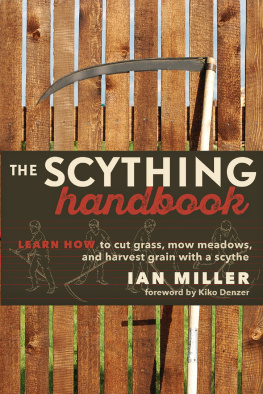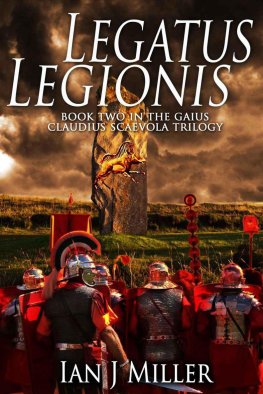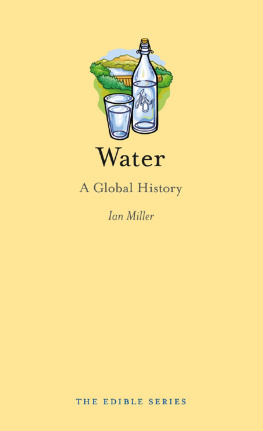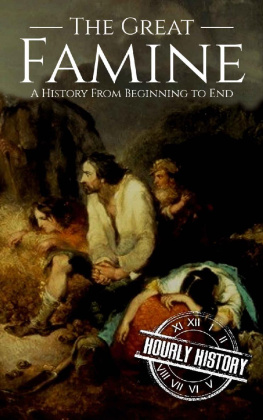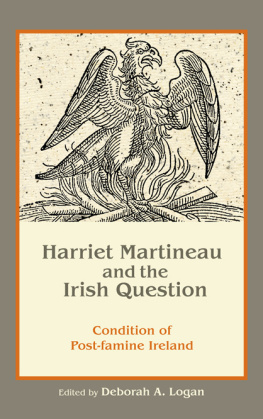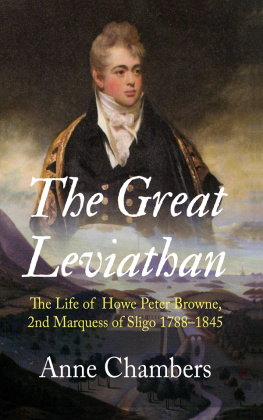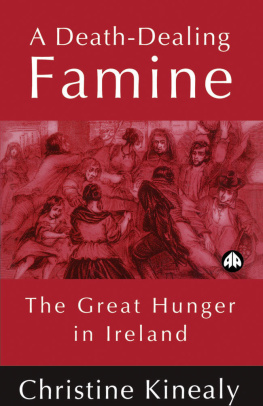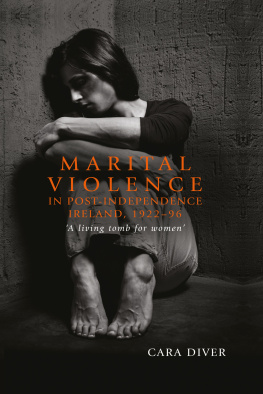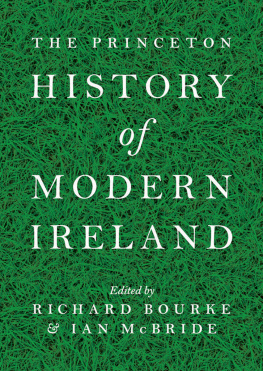Reforming food in post-Famine Ireland
Reforming food in post-Famine Ireland
Medicine, science and improvement, 18451922
IAN MILLER
Manchester University Press
MANCHESTER AND NEW YORK
distributed in the United States exclusively
by Palgrave Macmillan
Copyright Ian Miller 2014
The right of Ian Miller to be identified as the author of this work has been asserted by him in accordance with the Copyright, Designs and Patents Act 1988.
Published by Manchester University Press
Oxford Road, Manchester M13 9NR, UK
and Room 400, 175 Fifth Avenue, New York, NY 10010, USA
www.manchesteruniversitypress.co.uk
Distributed in the United States exclusively by
Palgrave Macmillan, 175 Fifth Avenue, New York,
NY 10010, USA
Distributed in Canada exclusively by
UBC Press, University of British Columbia, 2029 West Mall,
Vancouver, BC, Canada V6T 1Z2
British Library Cataloguing-in-Publication Data
A catalogue record for this book is available from the British Library
Library of Congress Cataloging-in-Publication Data applied for
ISBN 978 0 7190 8886 5 hardback
First published 2014
The publisher has no responsibility for the persistence or accuracy of URLs for any external or third-party internet websites referred to in this book, and does not guarantee that any content on such websites is, or will remain, accurate or appropriate.
Typeset
by Action Publishing Technology Ltd, Gloucester
For my family
The research in this monograph was supported by an Irish Research Council Fellowship. Upon moving to Dublin in 2009, I became intrigued by the question of how and why Irish dietary customs adjusted so dramatically after the Famine. While developing this initial idea, I discovered a rich array of printed and archival documents relating to food in Ireland since the Famine. The topic of consumption and production in post-Famine Ireland transpired to be one of deep complexity and enormity. This monograph recaptures some of the key areas of debate between the Famine and Irish independence in 1922.
I wish to thank Dr Catherine Cox for her support for my project. The Centre for the History of Medicine in Ireland where I pursued this research provided an active environment in which I learnt about, explored and began to appreciate modern Irish medical history. In particular, David Durnin, Sarah York, Mary Daly, Lindsey Earner-Byrne, Kirsten Mulrennan, Fiachra Byrne and Tom Feely proved to be excellent colleagues to work beside. I especially wish to thank Anne Mac Lellan for her enthusiasm for my research and the discussions which we regularly shared about Irish medical history. Further afield, Leanne McCormick, James Vernon, Michael Worboys, Hilary Marland, Carol Helstosky, James Kelly, Keith Smith, Philomena Gorey and Sean Lucey provided ongoing support for my research and academic career as did Ian Burney who I particularly wish to acknowledge.
I am indebted to Juliana Adelman for our in-depth discussions about late nineteenth-century Irish abattoirs; Christopher Hamlin for our enthusiastic conversations about the Irish stomach; Ciara Breathnach for directing me towards historical resources relating to Irish tea-drinking habits; David Gentil-core for sharing his research on the history of the potato; and Senia Paeta for discussing her research on Maud Gonnes Ladies School Dinners Committee with me.
The archival staff at the British Library, National Library of Ireland, Public Record Office of Northern Ireland (PRONI), Royal College of Physicians of Ireland, Royal College of Surgeons in Ireland and the Wellcome Library were always helpful, accommodating and efficient. In particular, Harriet Wheelock and Robert Mills at the Royal College of Physicians of Ireland Heritage Centre and Mary ODoherty at the Royal College of Surgeons in Ireland were particularly supportive and accommodating. I am particularly grateful to the Deputy Keeper of Records, Public Record Office of Northern Ireland for allowing me to reproduce my cover image. Images have also been reproduced courtesy of the National Library of Ireland.
I wish to acknowledge Manchester University Press for being extremely supportive and efficient throughout the entire process of publishing this monograph. An earlier draft of was previously published in Medical History. I am indebted to the editor of the journal, Sanjoy Bhattacharya, and Cambridge University Press for allowing me to reproduce aspects of this research that directly discuss the Famine. I presented various aspects of this monograph at workshops, conferences and events at University College Dublin, the Institute of Historical Research in London, Mater Dei Institute of Education, University of Limerick and City University London. I would like to thank the organisers and audiences for their suggestions and thoughts.
Finally, I especially wish to thank Kevin Miller, Pauline Miller, Sarah Miller, Katie Miller and Miriam Trevor.

When inaugurating the Dublin-based Health and Industries exhibition Ui Breasail in 1911, Lady Aberdeen, wife of the Lord Lieutenant of Ireland and founder of the Womens National Health Association, declared: Better food, greater energy; better economy, greater prosperity; better health, fuller life; these sequences give sense and truth to a relation which sounds at first incongruous and ridiculous national well-being.1 Aberdeens statement is complex. She presented food as integral to national interests, illustrating how improvement of the self through healthy eating was historically interpreted as a prerequisite for achieving full social, economic and national potential. Food supplied bodily energy which, in turn, optimised the productive capacities of labourers, according to Aberdeen. In her view, the anticipated increase in national wealth that would naturally result could not fail to promote communal health. Combined, these processes held the potential to improve Ireland on multiple levels. Aberdeen privileged personal acts of consuming as a basis of personal health, economic fecundity and national well-being. In short, she upheld food as integral to the organisation of Ireland. But why did Aberdeen link food consumption to so many domains of Irish existence? Why did she imbue it with levels of significance that extended so far beyond the physical and biological? And how, in the first place, did the issue of diet capture her attention?
Historiographical studies understate the complex meanings ascribed to food in post-Famine Ireland. Unsurprisingly, accounts of the striking adjustments in consumption and production customs from the 1850s onward coalesce around the Famine (c. 184552), after which Ireland is routinely portrayed as having steadily progressed to a safer dietetic modernity marked by declining dependency on the potato as a dietary staple. This seemingly instinctual communal response to the stark warning afforded by the Famine is often presumed to have later shielded the Irish populace from the ominous, but resonant, threat of a further major famine; an outcome only made possible by the consumption of a more diverse diet in what transpired to be a critical period of reform in national food practices. Shifting trading patterns have also routinely been depicted as having helped to reshape Irish food cultures. In the decades that followed the Famine, exports of beef, butter, dairy produce and eggs increased while imports of goods such as tea, bacon and cheap American ham rose.2








